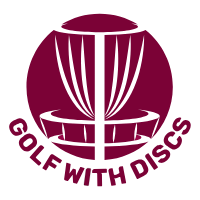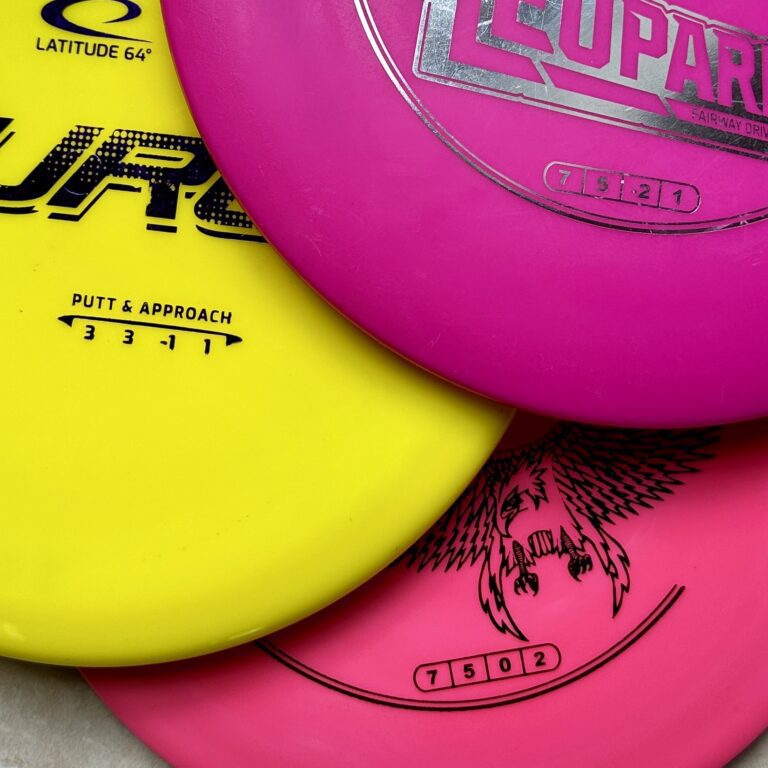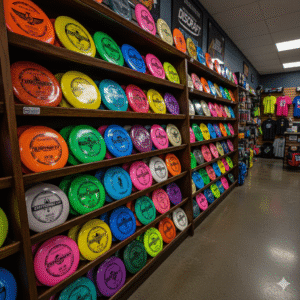Ever wondered why your disc betrays you mid-flight or lands like it’s got stage fright? The answer is stability—specifically, understable vs overstable discs. This guide isn’t just another technical breakdown. It’s your shortcut to throwing with intent rather than hope. By the end, you’ll know how disc flight really works and why picking the wrong disc is like bringing a spork to a sword fight.
This comprehensive guide will equip you with the knowledge to navigate the world of disc stability. We’ll delve into the flight characteristics of overstable vs understable discs (including stable discs for good measure!), explore factors affecting stability, and answer some burning questions that plague new players.
By the end of this flight, you’ll be a disc stability whiz, ready to unleash a symphony of controlled throws that leave competitors in your dust.
How to Identify Understable vs Overstable Discs
To spot an understable or overstable disc, skip the guesswork. Look at how it flies—and what the label tells you.
Flight Patterns:
- Overstable Discs (+1 and above): Think of these as the Volvo drivers of disc golf—safe, predictable, and prone to oversteering left at the end, especially in a headwind. Overstable discs fight against turning and exhibit a prominent fade towards the end of their flight (think a right-handed backhand throw finishing left). They’re your go-to discs for battling wind gusts and executing reliable hook shots.
- Understable Discs (-1 and below): Picture a playful spirit. These are your rebellious teenagers. They’ll veer off right with enthusiasm (for a right-handed backhand) before eventually remembering to come home—usually late and dramatic. They excel in maximizing distance and achieving those coveted hyzer flips (more on that later!).
Understanding Disc Specs:
Most discs showcase flight ratings – a series of numbers representing speed, glide, turn, and fade. Overstable discs typically boast lower turn ratings (0 or negative) and higher fade ratings, while understable discs tend to have the opposite – higher turn ratings and lower fade ratings.
Remember, throwing technique also plays a role. Experiment with different discs and observe their flight paths to solidify your understanding of stability.
Examples of Understable Discs and Their Characteristics
Understable discs offer advantages for distance enthusiasts and finesse throwers alike. Here are a couple of popular understable models to whet your appetite:
- Innova Leopard (3, 5, -1, 2): A classic understable fairway driver, the Leopard is perfect for beginners seeking effortless distance and learning shot shaping techniques. Its predictable turn and gentle fade make it a reliable companion for a variety of situations.
- Discmania TL3 (7, 5, -2, 1): For more experienced players, the TL3 offers a touch more speed while retaining its understable nature. This disc excels at hyzer flips and long, sweeping turnovers, allowing you to carve up the course with impressive control.
Key Differences Between Understable and Overstable Discs
Understable and overstable discs differ in flight path and stability ratings.
- Overstable Discs: Resist turning and finish with a strong fade. Imagine a determined athlete sticking to their straight-line running path.
- Understable Discs: Prone to turning and exhibit a less dramatic fade. Think of a playful pup excitedly meandering during a walk.
This distinction also translates to stability ratings. Positive ratings indicate overstable tendencies, while negative ratings suggest understable characteristics. Discs with a rating of 0 fall under the category of “stable,” offering a balanced flight path with minimal turn and fade.
Why Disc Stability Matters in Disc Golf
Disc stability is the hidden variable behind your best and worst throws. It affects where your disc goes, how far it flies, and whether your buddies cheer or chuckle.
- Accuracy: Understanding how a disc will turn and fade allows you to place shots with pinpoint precision.
- Distance: Choose the right disc and it’ll fly like it’s late for a flight. Pick the wrong one and it’ll stall like a teenager doing chores. Tailwinds often favor understable discs, while overstable discs can overpower headwinds.
- Control: Mastering disc stability empowers you to manipulate your throws and navigate various course obstacles with finesse.
By understanding understable vs overstable discs and understanding stability ratings, you’ll gain the upper hand on any course and improve your disc golf game.
Best Discs for Beginners Understable or Overstable
Beginners need help—so do their discs. Overstable ones forgive sloppy form; understable ones teach you where your form went wrong. Start with both, blame the discs later.
- Overstable Discs: Provide a more predictable flight path, making them easier to control for new players who are still developing proper throwing mechanics.
- Understable Discs: Can help beginners understand the impact of release angles on disc flight. They also offer valuable feedback on form, highlighting inconsistencies that might not be apparent with overstable discs.
The ideal approach for beginners is to find a balance.
Do Understable Discs Go Left or Right?
Understanding the flight of understable discs:
- Right Turn for Right-Handed Backhands: If you throw right-handed, understable discs will happily shoot off right (hyzer flip) before gently remembering their left-leaning values.
- Learning to Shape Shots: Understable discs let you shape shots like threading a shopping cart through a crowded aisle—awkward at first, but smooth once you get the angle right. By adjusting your release angle and power, you can manipulate these discs to achieve various flight paths, adding a new dimension to your disc golf arsenal.

Maximizing Forehand Throws with Overstable Discs
Overstable discs are your forehand’s stabilisers. Less wobble, more oomph. Ideal if your wrist’s got a mind of its own.
- Enhanced Stability: Overstable discs resist turning during a forehand throw, which can be more susceptible to wobble due to wrist movement. This translates to a straighter, more predictable flight path.
- Improved Control: The added stability of overstable discs allows for more forceful forehand throws without sacrificing accuracy. This is particularly beneficial for battling headwinds or navigating tight fairways.
Tips for Forehand Throws with Overstable Discs:
- Focus on a clean release with minimal wrist action.
- Engage your core and larger muscle groups for a powerful throw.
- Experiment with different release angles to find the sweet spot for maximizing control and distance.
Exploring Hyzer Flips and Their Application with Overstable Discs
Hyzer flips give you a way to throw further without needing a cannon for an arm. They’re ideal for tight gaps and fairways that punish straight lines.
- Hyzer Flip Defined: Throwing an overstable disc on a hyzer angle (tilted at an angle towards the ground) with enough power causes it to flip up to a flat position mid-flight before fading left (for a right-handed backhand throw). This results in a longer, more penetrating flight path compared to a traditional hyzer throw.
Executing a Hyzer Flip with Overstable Discs:
- Disc Selection: Choose a disc with a moderate overstable rating (around +1 to +2).
- Hyzer Angle: Tilt the disc at a significant hyzer angle during your grip.
- Power Up: Apply more power than you would for a typical hyzer throw.
- Witness the Flip: Watch how the disc flips to flat and holds a long, clean line before fading out.
Remember: Hyzer flips need practice. Try different release angles and power levels until it clicks—and then remember what you did.
Understanding the Role of Hyzer and Anhyzer Throws in Disc Golf
Hyzer and anhyzer throws are core techniques that shape your game.
- Hyzer Throw: Throwing a disc on a hyzer angle (tilted towards the ground) creates a stable flight path with a predictable fade at the end. This is ideal for tight fairways, headwinds, and controlled approaches.
- Anhyzer Throw: Throwing a disc on an anhyzer angle (tilted away from the ground) causes it to turn significantly before fading back. Great for getting around trees, throwing rollers, or adding distance in a tailwind.
By understanding hyzer and anhyzer throws, you can control disc flight to handle different holes with less guesswork.
Factors That Influence Understable vs Overstable Discs
What affects disc stability
- Disc Weight: Heavier discs are generally more stable than lighter discs. This is because they have more inertia and resist turning as easily.
- Plastic Type: Different plastics can affect stability. Generally, softer plastics offer more grip but may be less stable, while premium plastics tend to be more stable and glide further.
- Disc Wear: As discs become worn with use, they can lose some of their stability. Understable discs may fly straighter as they wear in. Overstable ones can lose their edge and behave less predictably.
Optimizing Disc Selection and Throwing Technique:
Factor in your throwing style and course conditions when picking discs and adjusting your throw. You’ll get better results with less frustration.
Addressing Common Questions About Disc Stability
Overstable discs offer greater stability during forehand throws, which can be more susceptible to wobble due to wrist movement. This translates to straighter and more predictable flight paths.
A hyzer flip is a throw where an understable disc is released on a hyzer angle, flips up to flat, and flies straight. It’s useful for achieving long, straight shots.
Yes—hyzer flips can add distance even with slightly overstable discs if your form and angle are right. The key lies in selecting the right disc (moderate overstable rating) and applying the proper throwing technique with sufficient power to achieve the flip.
Yes, disc stability ratings can vary slightly between brands. While there’s no universal system, most manufacturers utilize a similar numbering system (e.g., -2, 0, +1) with a brief description of the flight characteristics. It’s always recommended to consult the manufacturer’s information or disc golf review websites for specific details on a particular disc’s stability rating within a brand.
Beginners often want to keep things simple, but one disc won’t suit every shot. Disc golf courses present a variety of challenges, and having a selection of discs with different stability ratings gives you better options for different shots and conditions. As your skill level progresses, you’ll likely build a bag with a mix of overstable, stable, and understable discs to handle any situation on the course.
Understable discs tend to turn right (for right-handed backhand throws) during flight, while overstable discs resist turning and finish left.
Understable discs are generally better for beginners due to their ease of control and ability to achieve longer distances with less power.
Overstable discs perform better in headwinds as they resist turning, while understable discs may be more affected by wind.
Yes, with proper technique and understanding of disc angles, the same disc can be used for both hyzer and anhyzer throws.
Get Disc Stability Working in Your Favour
Understanding disc stability is key to improving your disc golf game. Understand flight paths, ratings, and what changes a disc’s behaviour, and you’ll start throwing with purpose.
This knowledge empowers you to:
- Select discs that perfectly complement your throwing style and course conditions.
- Execute a wider range of throws, from controlled hyzers to distance-maximizing hyzer flips.
- Navigate challenging obstacles with strategic finesse.
Remember, disc golf is a journey of exploration and experimentation. Embrace the learning process, have fun experimenting with different discs, and witness the magic unfold as you master the art of disc stability! With dedication and practice, you’ll transform from a bewildered beginner to a disc golf champion, and maybe even lose fewer discs in the process.






